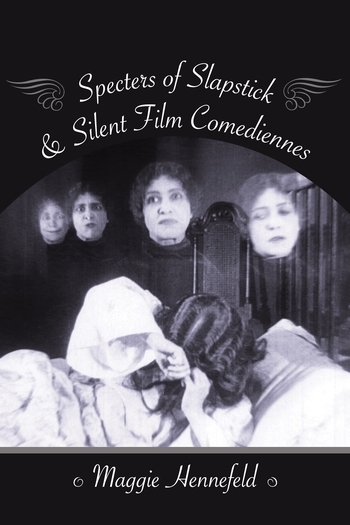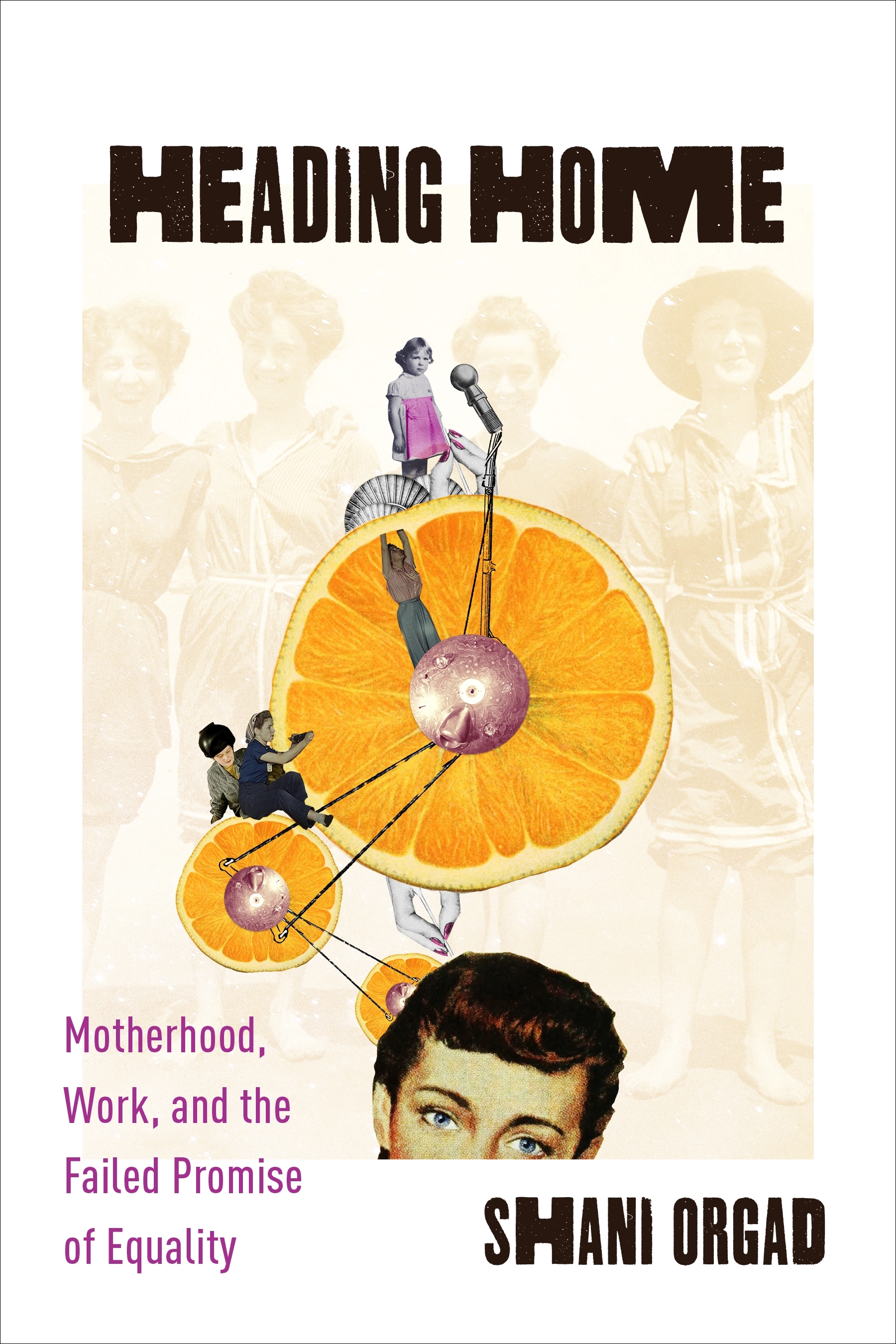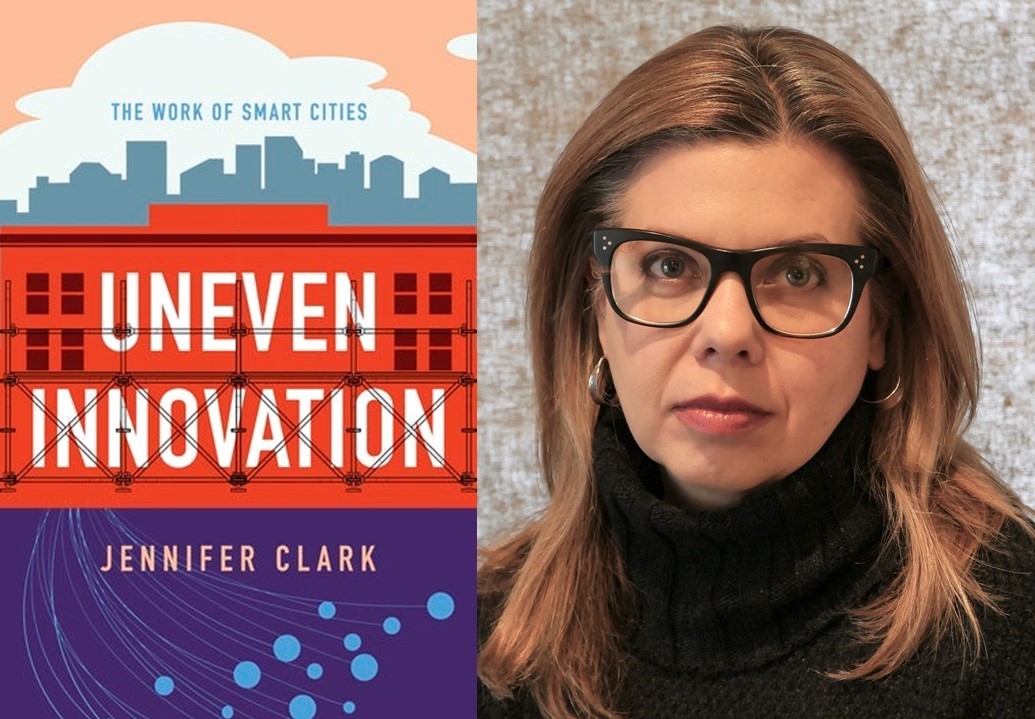Q&A: Shani Orgad on Heading Home

“This book tells a story about sacrificing career for family that resonates far beyond the lives of the women in London Shani Orgad has interviewed. Orgad makes a powerful argument about the denials women experience, precisely because the author does not rant. She is a gifted explorer of adulthood in all its promises, twists, and disappointments. Shani Orgad is one of the finest sociologists of her generation.”
~ Richard Sennett, author of The Corrosion of Character: The Personal Consequences of Work in the New Capitalism
Today, we are happy to share with you a guest post by Shani Orgad, author of Heading Home: Motherhood, Work, and the Failed Promise of Equality. She is associate professor in the Department of Media and Communications at the London School of Economics and Political Science. In this interview, Orgad delves into the source of her desire to research and write about motherhood and work, comments on the importance of her book’s structure, and explains what she found most surprising and challenging about her findings.
• • • • • •
Q: What made you write the book? Where did the idea of the book come from?
Shani Orgad: The book derived partly from my personal experience. I am the mother of two children. Every morning when dropping off my children at the local school in our leafy north London neighbourhood, I would meet some of the other moms (and occasionally dads). I was usually rushing because I had to get to work but many of the mothers were stay-at-home moms, and they would hang around, chat after the children went in, or go for coffee at a local café or one of their houses. In the book’s introduction I tell how once, one of these stay-at-home mothers invited me to join them for coffee. When I thanked her and said I couldn’t because I had to get to work, she looked at me pitying and said “you poor thing.” I was puzzled by her comment and wondered why she felt sorry for me. I knew that she and most of the other mothers had once been in paid work, and that most had professional careers. I had often wondered why they had become full-time mothers, and what their lives looked like. However, I didn’t have the courage to probe, and I was aware that asking might be perceived as judgmental or condescending – so I didn’t ask.
Then, at a class parents’ party I started chatting with one of these stay-at-home mothers and she told me her life story. She recounted with pride how she had graduated from a good university, and then started working as an accountant in a London firm. A few years later, she had met her future husband who worked in the same firm, and was now a senior partner in another global accountancy firm. She ended by saying sarcastically: “And look where he is and look where I am now!” This sentence stayed with me. I became increasingly curious about the women that belong to this group, i.e. middle-class women who had given up years of education, training, and successful careers, seemingly to embrace full-time motherhood. I read the available US and UK statistics and with the help of Gillian Paul, a UK labor economist, conducted a statistical analysis of the UK Labour Force Survey. Although this group of women is a minority, I was surprised to discover that an astounding 20% of stay-at-home mothers in the UK are highly educated while in the US, a quarter of stay-at-home mothers have college degrees.
What I found particularly perplexing was that there seemed to be a strange contradiction between contemporary cultural narratives and the choices made by these women. Sheryl Sandberg’s so-called feminist manifesto Lean In was published around the time I started my research. The year before the Atlantic published Anne-Marie Slaughter’s (2012) famous article “Why Women Still Can’t Have It All.” Popular shows like CBS’s The Good Wife and the fantastic Danish series Borgen depict successful career women who struggle to combine their jobs with motherhood but nevertheless ultimately achieve the holy grail of work-life balance. The message from governments and businesses in the UK and the US is consistent with these depictions: politicians and policymakers champion women’s participation in the workforce, and encourage them to stay, not leave. So, our cultural landscape is replete with images and stories that celebrate both real and fictional women who assert themselves and achieve leadership positions, and combine their professional ambitions with motherhood. I was thus deeply puzzled: why do women like the mother I spoke to at that party who had grown up in this cultural and policy climate which encouraged women to combine successful careers and motherhood, and who can afford the domestic help that would allow them to stay in paid employment, choose to “return” home?
Q: Is this why the book is structured as a juxtaposition of cultural narratives and the accounts of the women you interviewed?
SO: Exactly. As a sociologist I am fascinated by the relationship between people’s individual narratives and cultural narratives. I’m especially influenced by Charles Wright Mills’ Sociological Imagination. I’m interested in making connections between what he called “the personal troubles of milieu” which occur within one’s individual self and what he termed “public issues” of history and society. The interviews with women allowed me access to some of their personal experiences and struggles, whereas the analysis of cultural narratives that circulate in the media and policy discourses enabled me to understand some of the larger social frameworks that furnish these women’s most intimate personal struggles.
That’s why I decided to frame each of the chapters around a disjunction between a central aspect or trope of contemporary cultural narratives of gender, family, and work – empowerment, self-confidence, the cupcake mum, the mompreneur, etc. – and women’s accounts of their experience as they relate to these aspects.
Q: Did you have a sense of what you would find? Did your ideas and agenda change and evolve throughout the process of studying the topic?
SO: Yes, they changed a lot!
I expected that the women I interviewed would reiterate the idea of choice; that they’d tell me that they made a personal and free choice to leave paid employment. This notion was profoundly challenged. One of my interviewees, Liz, who is a former academic, married to a lawyer, who quit her career eight years earlier after the birth of her first child, described her leaving as a “forced choice”. That’s where the title of the book’s first section came from.
Another thing I expected to hear more about in the interviews is motherhood. I thought that the women would talk about it a lot. I imagined that a considerable part of the interviews would focus on their relationships with their children. I thought they’d proudly show me their children’s photos and tell me in detail about their activities and talents. But in fact, while obviously they talked about motherhood, a major focus of their accounts was their previous lives as workers, and the inequalities they experienced both at work and in the marital relationship, especially around childcare and the household.
Q: What are the things that most surprised you while researching this topic?
SO: One of the things I found very surprising was the continuing importance of wifehood. The common explanation for why women leave their careers is motherhood; specifically, that women underestimate the difficulties of combining employment and parenting. Another important reason is lack of affordable childcare, although it affects poorer and less educated mothers far more than highly educated ones, and clearly didn’t apply to most of the women I interviewed whose families can live on (their husband’s) single income. Other popular explanations attribute women’s decisions to leave paid employment to their individual preferences, psychological factors, and biological differences
However, I found that the decision to leave the workforce and become stay-at-home mothers was a decision that the women made as wives as much as mothers. It was as much about facilitating their husbands’ continued career advancement as it was about their desire to spend more time with their children. The demands and expectations of motherhood and the toxic working hours and conditions of both their and their husbands’ workplaces undoubtedly had a significant impact on their decision to step off the treadmill. But the stories of the women I interviewed revealed how the choices that they had made and their everyday lives had been profoundly influenced by their roles as wives, a theme I explore in depth in chapter 4.
Another thing that surprised me is that some women, who were mothers to both boys and girls, admitted that their hopes for their daughters and sons were different, and that they would advise their daughters to try to pursue a career that would accommodate childcare demands and family life, advice they wouldn’t necessarily give to their sons. More generally, I was struck by how many interviewees seemed – unconsciously – to be guiding their daughters to adjust to the cultural definition of femininity, of being a mother and a wife. One of my interviewees described how she’d tell her daughter “maybe you want to be a GP (General Practitioner or a physician) rather than a cardiologist.” And at the same time that these women encourage their daughters to curb their ambition, they invest huge amounts of money and time in educating their daughters, equipping them with versatile skills and reiterating the message that they could be anything they wanted to be. That’s a central contradiction I grapple with in the book.
Finally, I think that one of the greatest surprises I had was that alongside the many things that have changed in the last couple of decades in relation to gender equality, the accounts I heard revealed that a lot hasn’t changed. The two key historical points of reference that emerged from the interviews are the 1960s and early 1970s, when my interviewees’ mothers became mothers, and the 1980s, when the women I interviewed came of age. The fundamental paradox that I address in the book is how women who grew up surrounded by profoundly different messages from those of their mothers’ time, and were excited at the prospects of “girl power” in the 1980s, and the “lean in” messages of our era, made a choice that seems to go against all these messages. However, I found that alongside the calls for young girls and women to become empowered, confident, and assert and fulfil themselves, there continue to be stubborn social perceptions and contradictory expectation and cultural messages against which these women feel that they are constantly being measured and judged. The notion that a woman’s role and duty to be the “foundation parent” and the “good mother” is stubbornly held by women and men. Despite important changes in public perceptions, caring is still associated largely with women and is hugely devalued. The heterosexual family appears to be an inflexible structure with rigid gendered roles that both the women I interviewed, and their husbands, have helped to reproduce and consolidate. So almost three decades since Arlie Hochschild’s seminal study, The Second Shift, the accounts of the women I interviewed suggest that marriage has remained what Hochschild described as “a magnet for the strains of the stalled revolution.” And despite a lot of noise about gender equality in the workplace – which is how one of my interviewees put it – many workplaces remain rigid, inflexible, and incompatible with family life.
It’s this stark mismatch between the promise of change and equality and the unchanged social and cultural structures and narratives that shape and produce us, that’s at the heart of the book. It’s this fundamental disjuncture that produced the deep disappointments and sacrifices of the women I interviewed.
Q: Finally, can you tell us what you found most challenging in writing the book?
SO: There were many things I found challenging, but two stand out in particular.
The first concerns the treatment of the accounts of the women I interviewed. I made every effort to treat these accounts with sensitivity, empathy, and care. But at the same time, I tried also to explain their experiences in ways that I felt they denied or could not express. I sought to elucidate the connections and conflicts between their experiences and wider cultural and policy narratives and discourses.
Yet there’s always this anxiety about whether you have done justice to the people you interviewed, and especially whether the analysis might unintentionally come across as a criticism of the individual. My analysis is in no way a judgment or critique of the women I interviewed. On the contrary, I sought to provide an account of the conditions and contexts which had shaped these women’s lives and stories. So for instance, in chapter 6 I discuss the failure of my interviewees to see their own roles and agency in effecting the change they desire. But crucially this is not meant as a critique of them as individuals but rather of the structures and conditions that have produced and even encouraged this lack of agency, such as the fatalist sentiment in current discourse about the impossibility of challenging larger structural conditions of inequality.
The other challenge was to capture the huge field of media and policy representations. It’s infinite! Therefore, as I say at the beginning of the book, in examining media and policy representations of women, family, and work, my purpose was not to produce an exhaustive picture of the cultural terrain within which the subjectivities and experiences of the women I studied are situated. Rather, I selected illustrative examples of media and policy representations and discourses that resonated and/or were in tension with the accounts of these women’s lived experience.
1 Response
Leave a Reply
You must be logged in to post a comment.









Shani ‘s book seems to have touched upon a critical issue besetting post “womens lib”. Your interview with her touches the crux we are all avoiding: the sheer hard work, pressure, guilt and unfair stretching of capable “liberated” responsible mothers in key roles in the work place. This astute sociologist has honed her professional tools in order to hold up a mirror to society and a place called work.
I cant wait to read this newly published book.